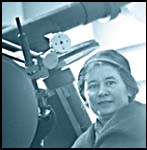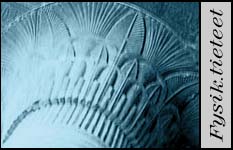 |


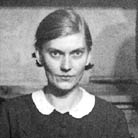
|

LIISI OTERMA
astronomer
1915-2001
|
 |
 |

Liisi Oterma, professor emerita in astronomy at university of
Turku, is maybe the best known Finnish woman in the area of physical
sciences. The talented young woman chose to study exact sciences,
as Sanskrit was not taught at the university. She chose a good
time to start her studies in first mathematics, then in astronomy.
Astronomy had been added to the curriculum in 1924, and the
professor of astronomy, Yrjö Väisälä, had just become the
head of the new observatory. During the first years of its
activity, the staff consisted of professor Väisälä, Liisi
Oterma, who had been appointed as observer, and a part time
assistant.
Yrjö Väisälä (1891-1971), influential in Finnish astronomy in
his time, was an energetic and brilliant scientist. His expertise
included physics, astronomy, geodesy and optics. He designed and
built a planet camera that was put into use in winter 1935.
The night sky was photographed with a double point method,
so that fixed stars were seen as two overlapping
points. Minor planets could be identified on the photographs
because they had moved between exposures, so that their
images were not overlapping, but visibly separate from each other.

Together with Väisälä, Liisi Oterma participated in the search for
minor planets already before finishing her Master's degree in 1938.
She was a diligent observer, and during some years the major part
of the internationally quite large amount of minor planet
observations made at Turku were hers.

Back then, observations were made in rather austere conditions.
Turun Sanomat (a local newspaper) published in 1946 a report
about a night that its reporter spent shivering in the cold with
Yrjö Väisälä and Liisi Oterma. "Time went on, and my hand holding
the pen grew number. That was because the observatory tower is
not heated. The best part of the year you just have to freeze,
at least if you are not used to it being cold. The astronomers are
clad like they were planning to take a sleigh ride, in furs and
in felt boots."

Besides of more than 200 minor planets, Liisi Oterma discovered
three comets. The best known of them, comet Oterma (1942 VII)
appeared in a photograph in March 1943. The calculations made by
Oterma showed that the furry object was a comet, and that its
orbit around the Sun was, surprisingly, circular. Its period
was just 8 years. Oterma could determine that the comet's
orbit prior to 1937 had been the usual elliptical one with
a period of 18 years, until Jupiter's gravitational attraction
had disturbed its orbit enough to redirect it to a circular
orbit between the orbits of Mars and Jupiter. Oterma predicted
that a similar disturbance would make the comet to resume an
elliptical orbit around 1962-63. This prediction, made in 1957,
became true.

Liisi Oterma published her dissertation in 1955 not on minor
planets, but on telescope optics. It describes methods
of optimizing the use of large telescopes. The dissertation
received highest marks, and Oterma became doctrix prima at
the degree ceremony at Turku university, held the same year.
She was also the first female Ph.D. of the faculty of sciences
and the very first woman to get a Ph.D. degree in astronomy
in Finland. In 1956, the Finnish alliance of business
and professional women chose her as their "woman of the year".

Oterma manufactured, together with Yrjö Väisälä, optics of high
standard for several telescopes located both in Finland and abroad,
e.g. the primary mirror for the Schmidt telescope at Uppsala.
Later, Oterma grew particularly interested in the motion of
the Earth's poles. She has, among other things, studied the
changes in the properties of quartz rods in variable
circumstances. This work is related to Väisälä's research
on quartz meter system. Väisälä used to praise Oterma's skill
in making these rods and said that she was "a whizz at
grinding".
Liisi Oterma became a docent of astronomy in 1959 and acting
professor of astronomy at university of Turku in 1962. When
the professorship was advertised as vacant, her competitors
for the vacancy were K. A. Hämeen-Anttila (later professor of
astronomy at university of Oulu) and Paul Kustaanheimo (professor
of astronomy at university of Helsinki, 1969-77). Oterma was
unanimously placed first on the list of candidates and
received the professorship in 1965. She retired in 1978.
After Yrjö Väisälä's death in 1971, she also served as director
of the astronomical-optical research institute at university of
Turku until 1975. Despite her undisputable skills as a
researcher, she was not as influential as her predecessor.

Liisi Oterma has the reputation of being a reticent and
unpretentious person. She featured in an article "Comet
Oterma" in the magazine Kansan kuvalehti in 1950, which
describes her scientific reputation: "An Italian astronomer,
who met Oterma in 1948 at an international astronomical
congress in Switzerland, told that he had thought that she
would be an old man with a long beard. Oterma is, however,
a woman, and rather young at that. She is a paragon of
freshness, health and unpretentiousness. Her blonde hair
has been braided around her head, her eyes are dark and
lustrous, and her smile is quite winning. Oterma is neither
serious nor stiff - her smile appears quite easily to
light her face. Only when she is asked to talk about herself
or when she has to resign herself to being photographed,
she becomes impossible."

Professor Anders Reiz from the observatory of Copenhagen
who knew about Oterma's interest in languages has said that she
"keeps silent in eleven languages". Oterma's proficiency in
languages includes German, English, Spanish, Italian, Hungarian,
Esperanto and French. She chose to write her dissertation in
French. As a person interested in languages, it was natural
for her to conclude her inauguration lecture with thoughts about
whether there are other sentient beings in the universe with
whom humans could exchange messages: " The nearest planet
with beings who might be interested in communicating with us
would be located within a distance of 300 light years. [...]
if our neighbour civilizations have developed e.g. a few
hundred years further than us, they have probably sent
us messages. We only need to listen."

Eva Isaksson

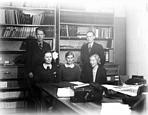 1 1
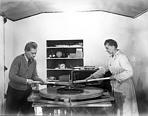 2 2
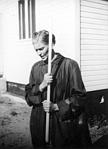 3 3

1 Tuorla observatory staff in the early 1943. Back row: director
Y. Väisälä, next to him assistent H. Alikoski, front row computers
V. Laiho ja I. Rinne, in their middle observator L. Oterma.
Photo: Tuorla Observatory.

2 Yrjö Väisälä and Liisi Oterma sliping a corrective lense
for the Kvistaberg observatory in the Tuorla tunnel workshop 1955.
Photo: Tuorla Observatory.

3 Liisi Oterma on her way to the Tuorla tunnel laboratory with a quartz metre.
Photo: Tuorla Observatory.

|
 |
|
